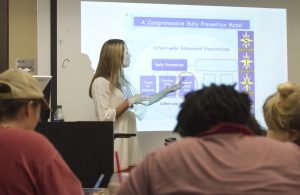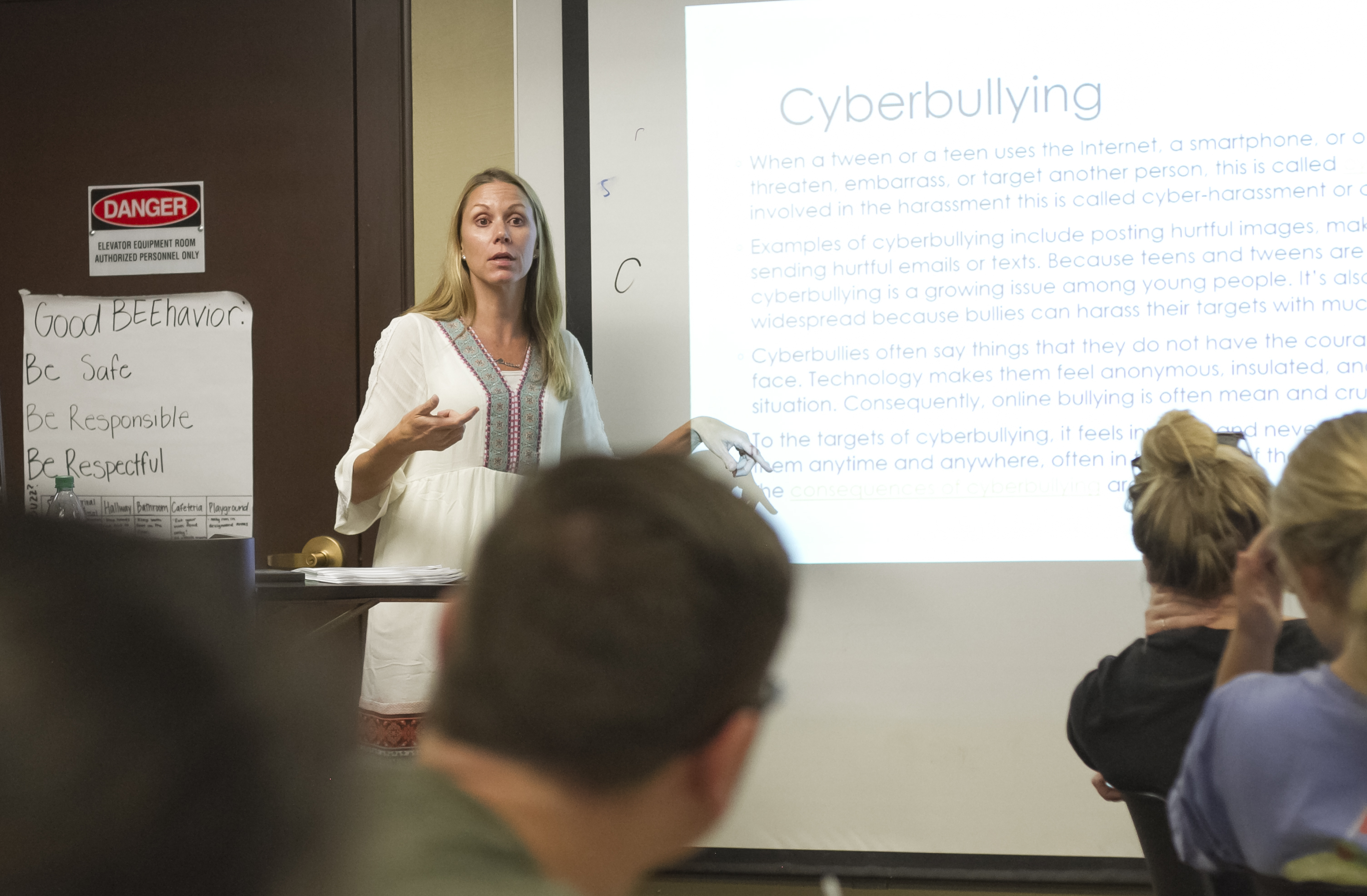By David Miller
UA Education Students Get Bullying, Suicide Prevention Training

The increasing prevalence of middle school and high school students threatening self-harm and committing suicide is a worrying trend for future educators.
Some risk factors are easy to recognize – social isolation, drastic changes in behavior – but there are “situation behavior” patterns for suicidal thoughts that are emerging in schools, like being a perfectionist or even a new student to a school.
The list of risk factors and suicidal behavior patterns continues to grow, and the onus to recognize and support these students rests with more than school counselors; teachers must be trained and willing to notice these trends, too.
The Alabama Board of Education has mandated all teachers receive suicide prevention and anti-bullying training. More than 20 UA special education majors are part of a pilot program in which they receive training before they become full-time teachers and before they begin internships.
Collaborative education students in Dr. Sara McDaniel’s SPE 435 class recently completed suicide and bullying prevention modules and will achieve certification to meet the state’s requirement. The timing of the training is pivotal, said Anna Kathryn Bonner, a senior special education major.
“I’ll likely go through another training once I get hired, and I’ll already have things I can remember,” Bonner said. “And whatever I learn here, I can give feedback and maybe share ideas to help other teachers.”
Making connections
After watching a suicide awareness video produced by the Jason Foundation, students said the volume of information, from suicide statistics to obscured risk factors, was overwhelming. But for senior special education major Amanda Clifford, the training evoked memories of high school classmates and the “cliquey” phase students navigate as their social networks develop.
“Going through that and listening to the video, seeing how some kids struggle with that, I could see kids from my high school and how they struggled with it themselves,” Clifford said. “You could see how they were fitting in and how they were having depressive tendencies. I could really relate that back to the video.”
Making those connections to relevant and relatable experiences in high school is easier for college students than a veteran educator, and that’s one of several benefits of providing training to education students, McDaniel said. Additionally, it establishes the reality that teachers are informally functioning as both social workers and counselors.
“It’s overwhelming, but our teachers are overwhelmed,” McDaniel said. “It’s better to be proactive and let them know these things before they get in one of those situations and not know what to do, or know that these responsibilities would be part of their job.”
In addition to the Jason Foundation – founded by Clark Flatt after his son, Jason, committed suicide in 1997 – McDaniel used anti-bullying materials from the National Center for Positive Behavioral Interventions and Supports. Both sets of materials are free and accessible online. McDaniel, who directs the state’s PBIS office, said that, in addition to cost and access, training materials must be evidence-based.
The trainings featured both videos and discussions about risk factors, interventions and strategies to encourage reporting. The trainings also included discussions of trends that have recently emerged, like the broadening demographics of suicidal behavior, the advent of social media and the social phenomena of attention-seeking competition.
“It’s made to be something cool to be anxious or depressed,” Clifford said. “And with social media, it’s become a popularity contest. Adults don’t know necessarily how to handle it or be prepared for it – it just didn’t happen when they were in school. Kids are pushing the limits and taking threatening risks.”
